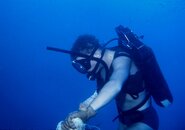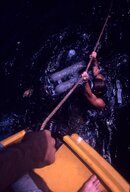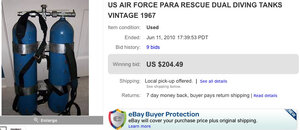Where are you reading this stuff? I assume you mean "hydro" and not "VIP".
http://www.luxfercylinders.com/downloads/docs/scubaguide.pdf
Minimum for a VIP (as per the manufacturer) is annually, more often under heavy use.
This is from a Luxfer VIP Guide from 1972-1987 so yes, it is out-of-date.
>>The frequency of inspection for an SCBA cylinder is determined by the type of cylinder,
how often it is used22 and the care4 it has received.
Aluminum Cylinders and Hoop-Wrapped Composite Cylinders
Luxfer has identified three levels of service: Normal, Heavy and Unusual Treatment,
Accident or Condition (UTAC). They are defined as follows:
A. NORMAL SERVICE. These cylinders are well cared4 for and maintained and are filled
or topped off three or four times22 a week or less. Every SCBA cylinder in good condition
should be visually inspected no less than every 30 months for all-aluminum
and every 18 months for hoop-wrapped composite cylinders and at any opportune
time before that point.15
B. HEAVY SERVICE: Heavy service means any one or more of the following:
1. Cylinders being filled or topped off five or more times per week; and/or
2. Cylinders used wherever damage is more likely than in normal use or where the
care and/or maintenance is below recommended care;4 and/or
3. Normal Service Cylinders that have been repaired (defined below).
If the cylinder is used in Heavy Service, it should be inspected every twelve months<<
However, this is not the document that I read--I'm sure it was fairly recent. I just can't find the one I read but I recall it said 2 1/2 years as opposed to 30 months and was regarding the alloys under discussion. I'll keep looking...
I don't necessarily agree with this, but it does not agree with the required frequency of VIPs, even at the time it was written. As I recall, in the late 80s and early 90s some dive shops required a VIP annually and other dive shops did not require a VIP at all.
As dive shop owners, how often does a scuba tank (either steel or aluminum) NOT pass a hydro test, VIP, or eddy test and become condemned?







